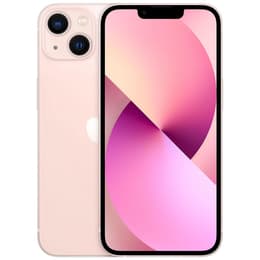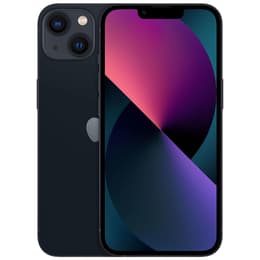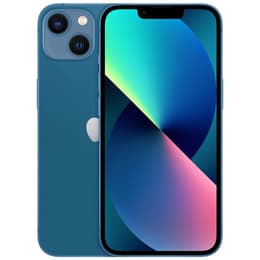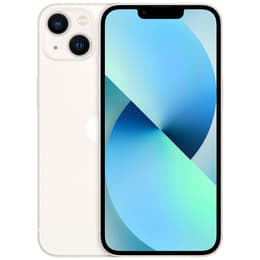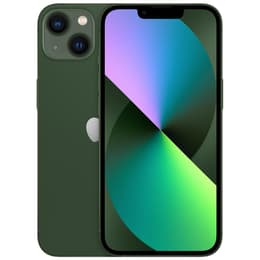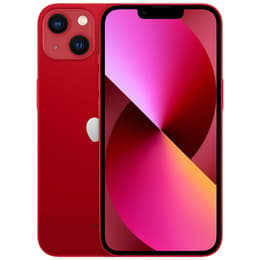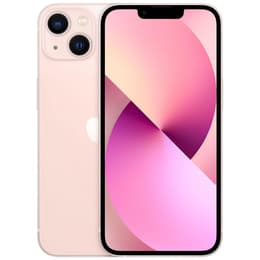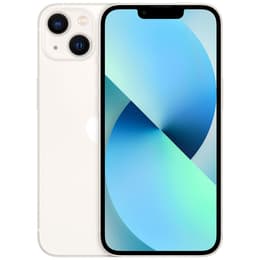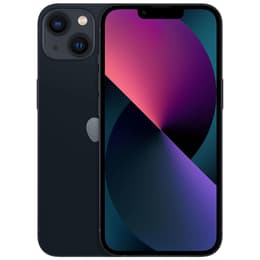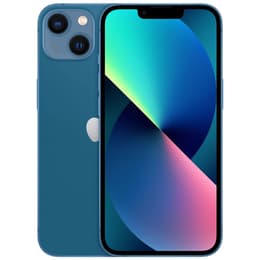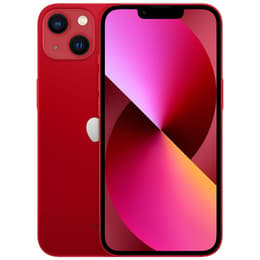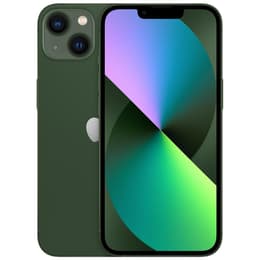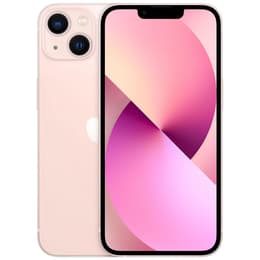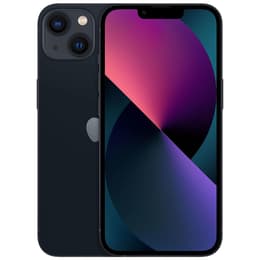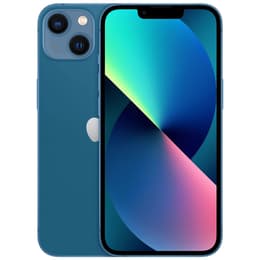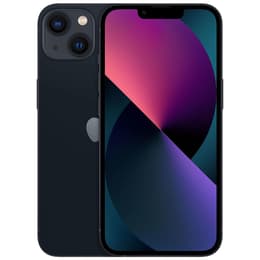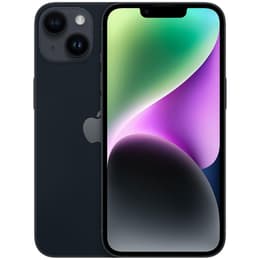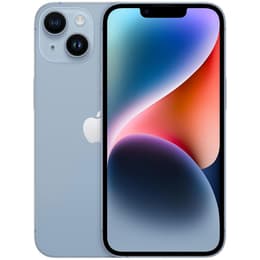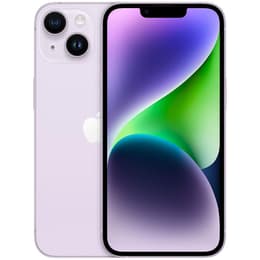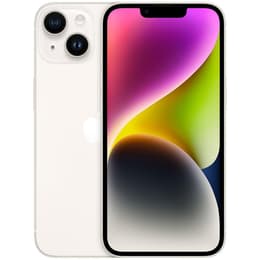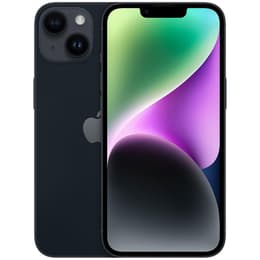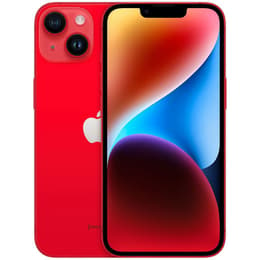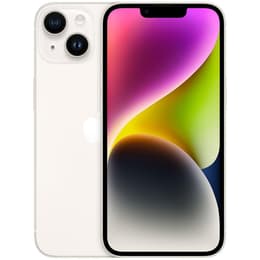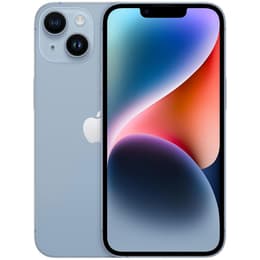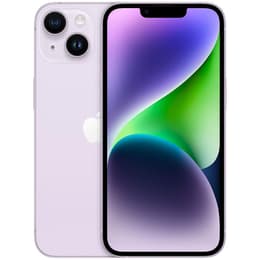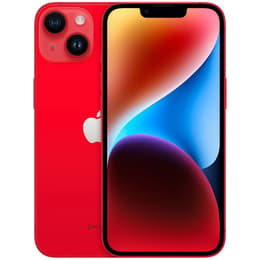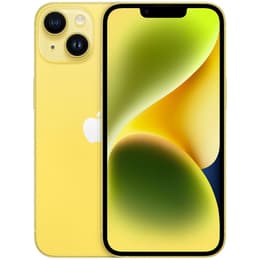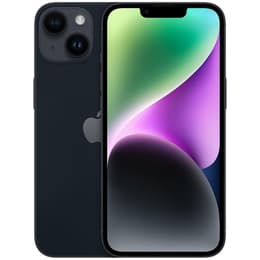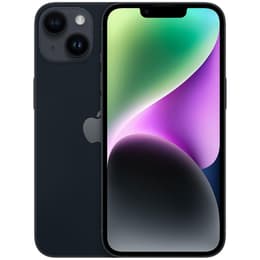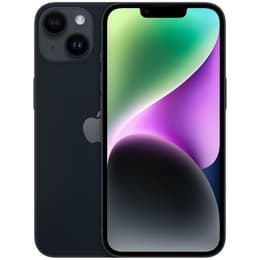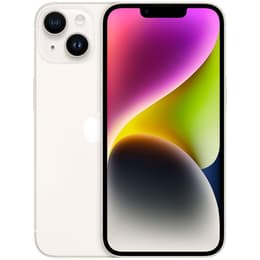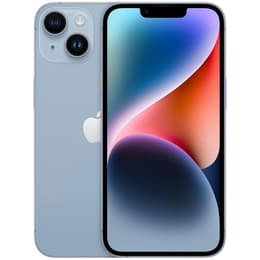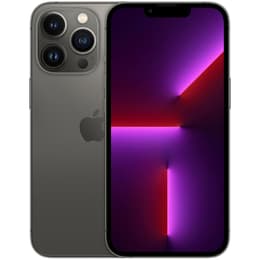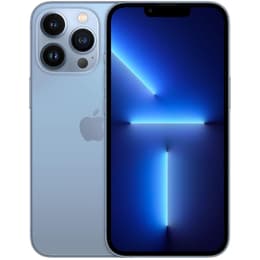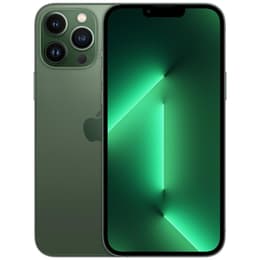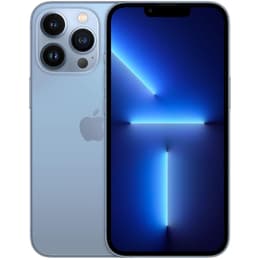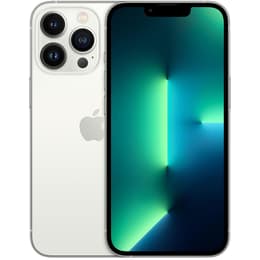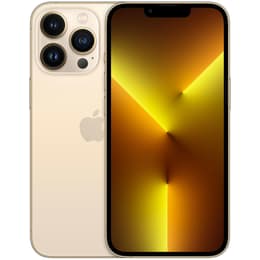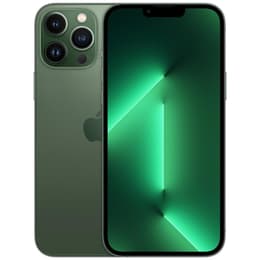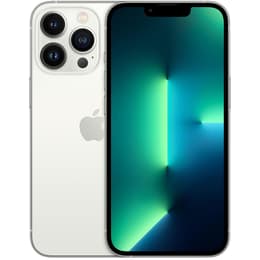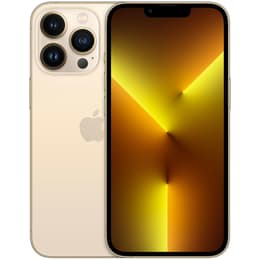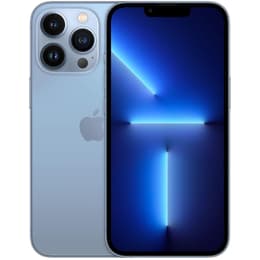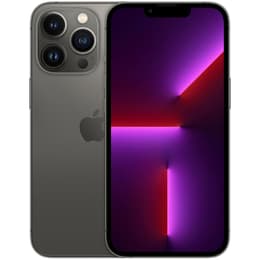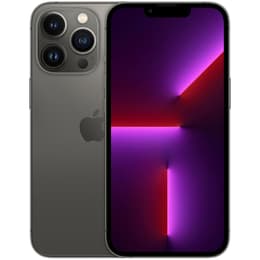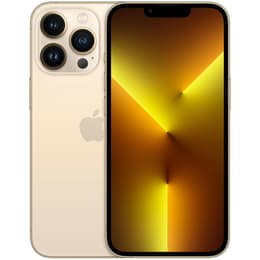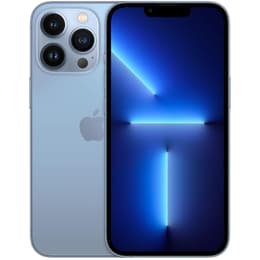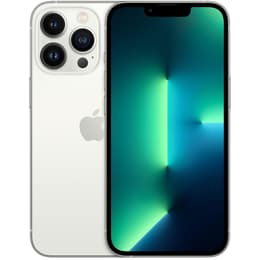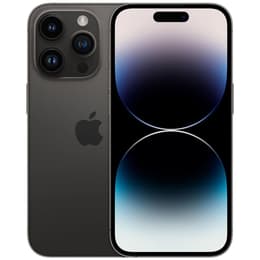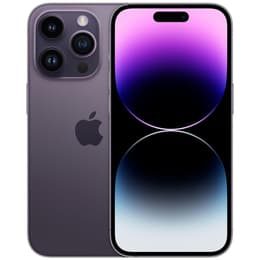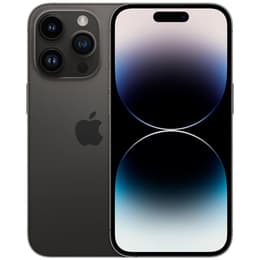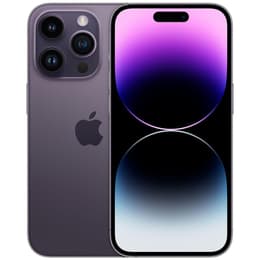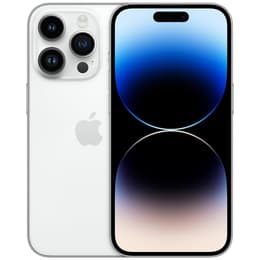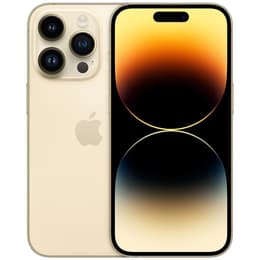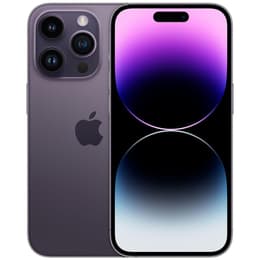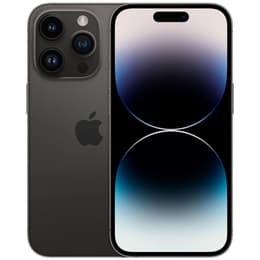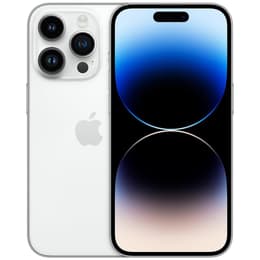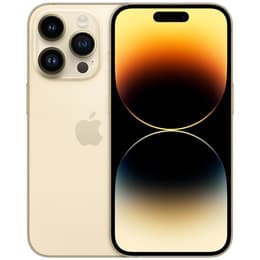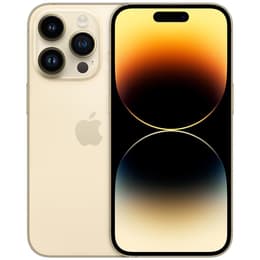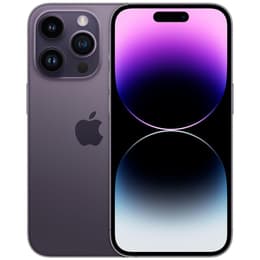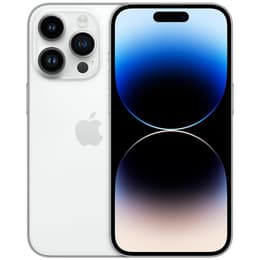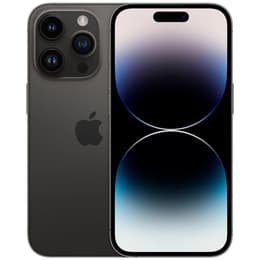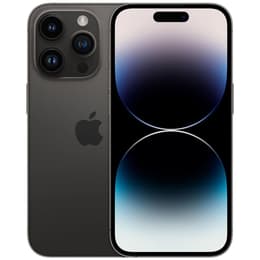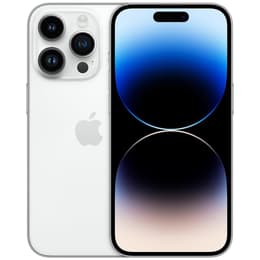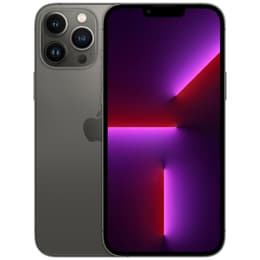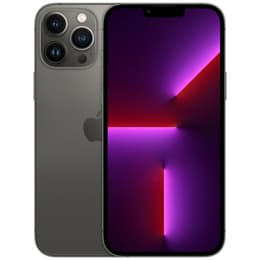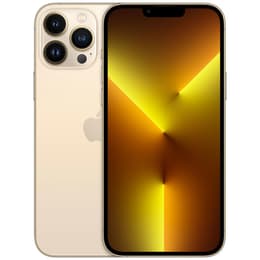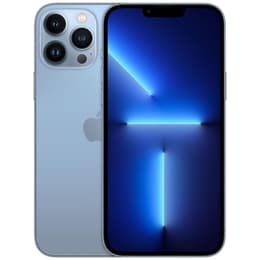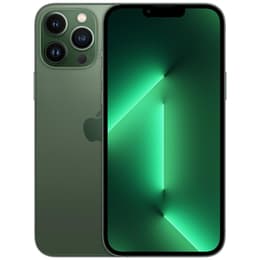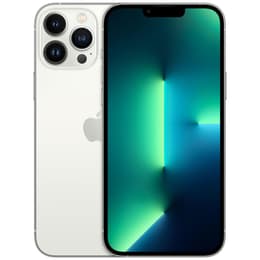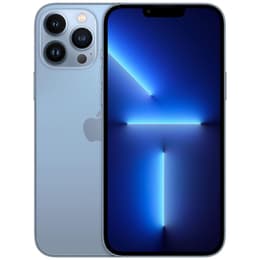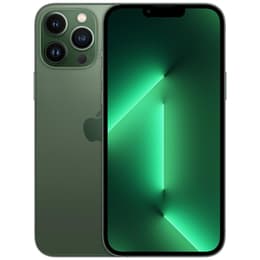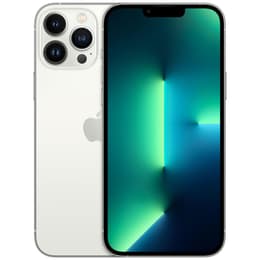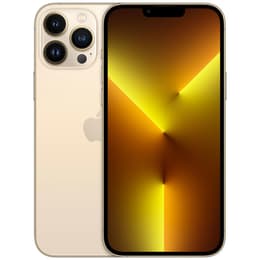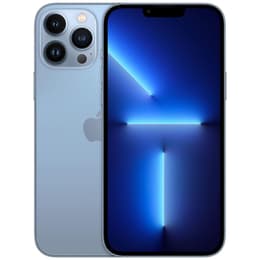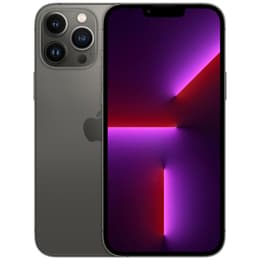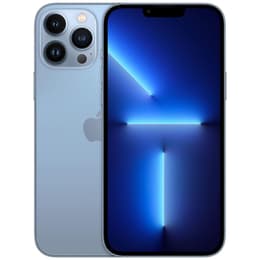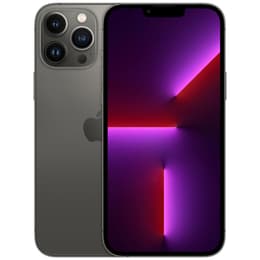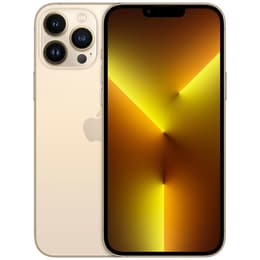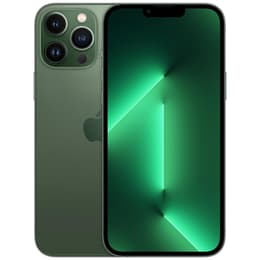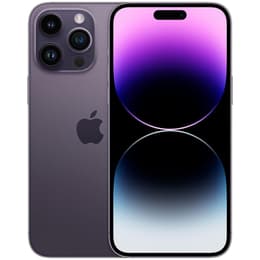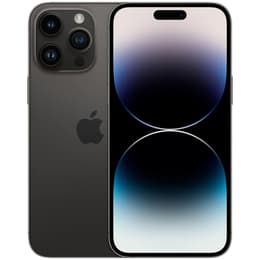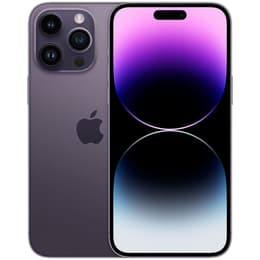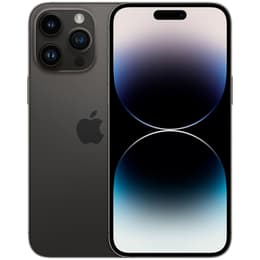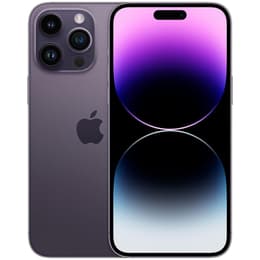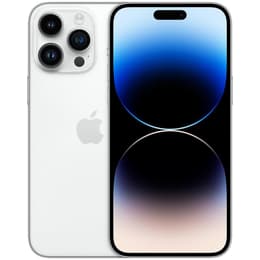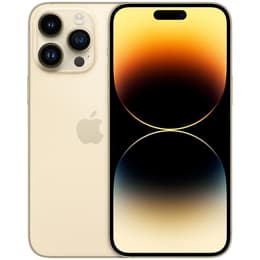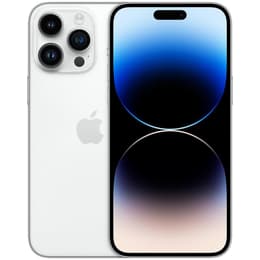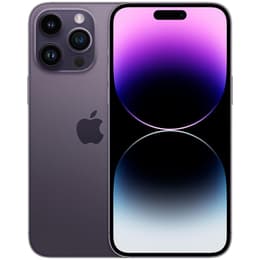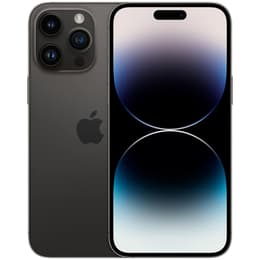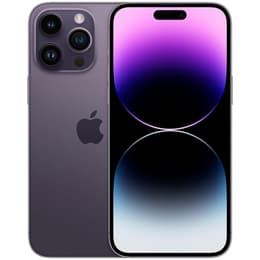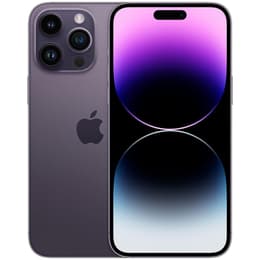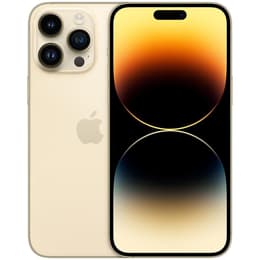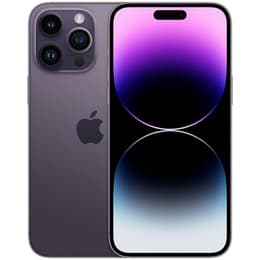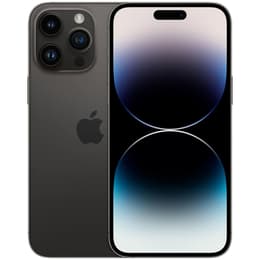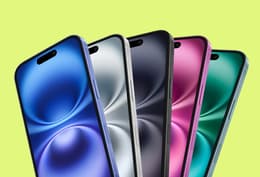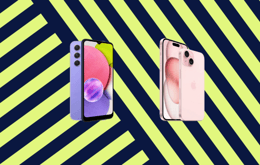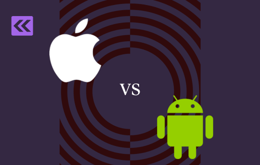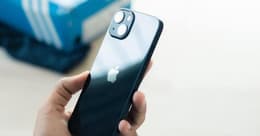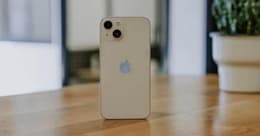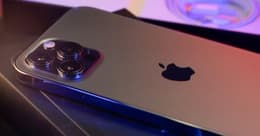
iPhone 13 series vs iPhone 14 series: Which offers the best value for money?
Updated on July 16, 2025
July 16, 2025
19 mins read
Miguel G.
Sr. Tech Copywriter (US)
Considering the iPhone 13 or iPhone 14 series in 2025 is a testament to how well these phones have stood the test of time. The iPhone 14 series closely mirror the iPhone 13 series, with a few notable additions. Both series share a processor, and with the essentially unchanged cameras and similar design, it is evident that the differences lie in refinement rather than evolution. Both series deliver a very similar experience for most day-to-day tasks, but which one truly has the edge? Let's explore.
The iPhone 14 is good, but the iPhone 13 still delivers
Visually, the iPhone 13 and iPhone 14 series are nearly identical, and the choice between them boils down to your specific needs and budget. While the iPhone 14 series introduces upgrades like SOS Emergency satellite connectivity and Crash Detection, it retains much of what the iPhone 13 series already offers, including the A15 Bionic chip, overall design, and display. If advanced safety features, camera enhancements, and extended software support are your top priorities, the iPhone 14 series is an excellent choice. However, if you value performance and affordability without needing the latest tech, the iPhone 13 series remains a compelling option. Overall, while the iPhone 14 series may have the edge, the iPhone 13 series continues to deliver great value.

Why you can trust this iPhone 13 series vs iPhone 14 series review
At Back Market, our goal is simple: make tech reliable, affordable, and sustainable. With a background in tech journalism and engineering, we have created this comparison to provide a clear, unbiased view so you can choose the best iPhone for your needs. You can trust this review because it is based on thorough research, expert analysis, and real-world insights. We've broken down key differences in design, performance, camera quality, and overall value to help you make an informed decision. Whether you’re upgrading or joining the iPhone ecosystem for the first time, this review aims to offer insight you can rely on.
iPhone 13 vs iPhone 14
Specifications
Model | iPhone 13 | iPhone 14 |
Display | 6.1-inch Super Retina XDR OLED display with True Tone | 6.1-inch Super Retina XDR OLED display with HDR and True Tone |
Rear camera | Dual 12MP camera system | Dual 12MP camera system |
Front camera | 12MP | 12MP |
Storage | 128GB, 256GB, 512GB | 128GB, 256GB, 512GB |
Security | Face ID | Face ID |
Processor | A15 Bionic chip | A15 Bionic chip |
Bluetooth | 5.0 | 5.3 |
Connectors | Lightning connector | Lightning connector |
Network | 5G/LTE, Wi-Fi | 5G/LTE, Wi-Fi |
Battery | 3265 mAh battery | 3300 mAh battery |
Wireless charging | Yes | Yes |
Size | 146.7 x 71.5 x 7.65 mm | 146.7 x 71.5 x 7.8 mm |
Weight | 174 g | 172 g |
Design and display
At first look, the iPhone 13 and iPhone 14 seem nearly the same, but there are subtle differences worth noting. Both phones share the same durable build quality with aerospace-grade aluminum frames and Ceramic Shield front cover, with both phones being 5.78 in tall and 2.28 in wide. There's a slight difference in weight and depth, as the iPhone 14 weighs 6.07 oz and is 0.01 in thicker, while the iPhone 13 weighs 6.14 oz at 0.30 in thickness. Both phones are available in six color options.
The iPhone 14 retains the Super Retina XDR display offered on the iPhone 13, and both models get a 6.1-inch OLED screen with a resolution of 2532 x 1170 pixels. While the brightness and resolution remain unchanged, the iPhone 14 boasts a more durable screen due to its enhanced ceramic substrate glass. However, this difference is only marginal; most users won't notice it.
Performance
Under the hood, the iPhone 14 retains the A15 Bionic chip used in the iPhone 13, with only marginal improvements to performance. The real difference is in the GPU performance. The iPhone 14 runs a 5-core GPU, which is better than the 4-core GPU in the iPhone 13, meaning better graphics, especially for gaming and graphics-intensive apps. Both phones still use Face ID and can connect to 5G signals.
Camera
Camera capabilities are where the main difference between the two phones lies. Both phones have three cameras: a selfie camera above the screen and two on the back. Both cameras are pretty much the same, with both phones having 12MP main and wide cameras, each offering a 2x optical zoom and 5x digital zoom.
The main difference is that the iPhone 14 includes sensor-shift optical image stabilization for the wide camera, a feature previously only available in the iPhone 13 Pro models. This “Action Mode” lets you take sharper images and more stable videos. The iPhone 14 also introduces Photonic Engine technology, which enhances low-light performance across all cameras by up to 49%, making it possible to take crisper photos. The selfie camera has also been improved and now has autofocus, which enables you to take clear images even when capturing different subjects at different distances.

Front and back view of the iPhone 13.
Battery and charging
The iPhone 14's improved Bionic chip gives you more performance from every battery charge. The upgraded Bionic chip makes the phone run faster and more efficiently, so the iPhone 14’s battery lasts longer. Apple says it can last up to an hour longer than the iPhone 13 when constantly playing videos (20 hours of battery life compared to 19 hours). Both models support MagSafe and Qi wireless charging and fast charging via a 20W Lightning adapter. However, the iPhone 14 offers faster wireless charging speeds and improved battery optimization.
Special features
A few features introduced on the iPhone 14 aren't present on the iPhone 13. First, there are the advanced safety features. These include SOS Emergency satellite connectivity and Crash Detection. These features provide added security but may not be essential for all users. The other new feature of the iPhone 14 is the lack of physical SIM card trays. Instead of physical SIM cards, users must install an electronic SIM card, also called an eSIM.
iPhone 13 Pro vs iPhone 14 Pro
Specifications
iPhone 13 Pro vs iPhone 14 Pro specifications | ||
|---|---|---|
Model | iPhone 13 Pro | iPhone 14 Pro |
Display | 6.1-inch Super Retina XDR display with ProMotion | 6.1-inch Super Retina XDR display with ProMotion |
Rear camera | Pro 12MP camera system | Pro camera system with 48MP main camera |
Front camera | 12MP | 12MP |
Storage | 128GB, 256GB, 512GB, 1TB | 128GB, 256GB, 512GB, 1TB |
Security | Face ID | Face ID |
Processor | A15 Bionic chip | A16 Bionic chip |
Bluetooth | 5.0 | 5.3 |
Connectors | Lightning connector | Lightning connector |
Network | 5G/LTE, Wi-Fi | 5G/LTE, Wi-Fi |
Battery | 3150 mAh battery | 3200 mAh battery |
Wireless charging | Yes | Yes |
Size | 146.7 x 71.5 x 7.65 mm | 147.5 x 71.5 x 7.85 mm |
Weight | 204 g | 206 g |
Design and display
The iPhone 13 Pro and iPhone 14 Pro have a very similar appearance. They both have glossy rears and are crafted from aluminum and glass. The iPhone 14 Pro is available in four colors: Gold, Silver, Deep Purple, and Space Black, while the iPhone 13 Pro is available in Graphite, Gold, Silver, Sierra Blue, and Alpine Green. The iPhone 14 Pro upgrades its design, shifting to a pill-shaped cutout from a drop-down notch; a design Apple calls a Dynamic Island. The Dynamic Island serves as a secondary display for background apps, notifications, and pop-ups.
There are no standout alterations between the display quality of the iPhone 14 Pro and iPhone 13 Pro, as both models share a 6.1-inch display with similar technology. Moreover, identical to its older counterpart, the iPhone 14 Pro also features a Ceramic Shield for improved durability. The iPhone 14 Pro edges over the 13 Pro in peak brightness, however, with 1,600 nits of peak brightness inside and up to 2,000 nits outside. The iPhone 13 Pro can only manage a peak brightness of 1,200 nits. Both phones offer good brightness and will operate effectively both in daylight and indoors.
Performance
The iPhone 14 Pro has improved performance thanks to its A16 Bionic chip. The iPhone 13 Pro is powered by the A15 Bionic chip, which falls short of the A16 Bionic chip. The A16 chip features a 6-core CPU and a 5-core GPU. With a higher transistor count, the A16 is built on a more advanced 4nm architecture, while the A15 retains a 5nm design. Apple claims the A16 is 40% faster than its competitors, such as the Snapdragon 8 Gen 1, and 20% more efficient than the A15, leading to improved battery life for the iPhone 14 Pro. Additionally, the A16 chip enhances the iPhone 14 Pro's camera system with a more advanced image processor, further boosting video and photo quality.

Front and back view of the iPhone 14 Pro.
Camera
The iPhone 13 Pro features 12MP sensors across all four cameras, while the iPhone 14 Pro upgrades the main camera to a 48MP sensor for higher-resolution images. This change and the larger sensor size make the rear camera bump on the iPhone 14 Pro even more noticeable. The iPhone 13 Pro has a wider f/1.5 aperture on the main camera compared to the 14 Pro's f/1.78, theoretically allowing it to capture more light. However, the iPhone 14 Pro compensates with a significantly larger sensor, improved image stabilization, and Apple's new Photonic Engine, resulting in better image quality. The new quad-pixel sensor also enables 2x telephoto zoom mode at 12MP, offering greater flexibility for framing shots. The iPhone 14 Pro records 4K footage at various frame rates on the video front, including 24 fps in Cinematic mode for a more cinematic look. The front camera also receives improvements with a wider f/1.9 aperture, enhanced by the Photonic Engine for brighter, sharper selfies than the iPhone 13 Pro.
Battery and charging
The iPhone 13 Pro brought a noticeable improvement in battery life compared to previous models, primarily because of the larger battery capacity. However, compared to the iPhone 14 Pro, there isn't much difference, with the 14 Pro just barely edging the 13 Pro. The iPhone 14 Pro features a 3,200mAh battery, 3% bigger than the iPhone 13 Pro's 3,095 mAh battery. According to Apple, there is no change in battery life, with both phones providing up to 20 hours of video playback and up to 75 hours of audio playback. Regarding charging speeds, there are no changes. The iPhone 14 Pro supports 20W charging, the same as the iPhone 13 Pro, and a full top-up with a compatible charger should take around 2 hours. Both the iPhone 14 Pro and 13 Pro support MagSafe wireless charging.
iPhone 13 Pro Max vs iPhone 14 Pro Max
Specifications
iPhone 13 Pro Max vs iPhone 14 Pro Max specifications | ||
|---|---|---|
Model | iPhone 13 Pro Max | iPhone 14 Pro Max |
Display | 6.7-inch Super Retina XDR display with ProMotion | 6.7-inch Super Retina XDR display with ProMotion |
Rear camera | Pro 12MP camera system | Pro camera system with 48MP main camera |
Front camera | 12MP | 12MP |
Storage | 128GB, 256GB, 512GB, 1TB | 128GB, 256GB, 512GB, 1TB |
Security | Face ID | Face ID |
Processor | A15 Bionic chip | A16 Bionic chip |
Bluetooth | 5.0 | 5.3 |
Connectors | Lightning connector | Lightning connector |
Network | 5G/LTE, Wi-Fi | 5G/LTE, Wi-Fi |
Battery | 4400 mAh battery | 4350 mAh battery |
Wireless charging | Yes | Yes |
Size | 160.8 x 78.1 x 7.65 mm | 160.7 x 77.6 x 7.85 mm |
Weight | 240 g | 240 g |
Design and display
The iPhone 14 Pro Max essentially inherits the looks of its predecessor, taking on the same screen size and roughly the same design, featuring flat sides and a glass and stainless metal construction. There's a tiny change in dimensions for the iPhone 14 Pro Max, but it's so small that it’s almost unnoticeable. The most noticeable change is the Dynamic Island, a pill-shaped system on the display that replaces the 13 Pro Max's notch. It introduces a new design feature, and even more impressively, it serves as a status bar. Another added feature on the iPhone 14 Pro Max is the Always-On display. It is available on the 14 Pro Max at a 1Hz refresh rate for dimmer wallpaper with minimal battery drain.
The 14 Pro Max is available in Deep Purple, Gold, Silver, and Space Black, while the 13 Pro Max is available in Alpine Green, Graphite, Gold, Silver, and Sierra Blue. Both phones have a 6.7-inch OLED display with almost identical resolution. However, the 14 Pro Max has thinner borders for a refined look and has bumped up its peak brightness to an impressive 1,600 nits indoors and 2,000 nits outdoors. The iPhone 13 Pro Max can only manage a peak brightness of 1,200 nits outdoors. Both Pro Max models feature 120Hz ProMotion for smooth scrolling, but the 14 Pro Max can drop to 1Hz, while the 13 Pro Max stops at 10Hz. They both use Face ID for biometrics, and it works the same.
Performance
The iPhone 14 Pro Max uses Apple's A16 Bionic chip, an upgrade over the A15 bionic chip used in the iPhone 13 Pro Max. The new chip has a 6-core CPU with two performance and four efficiency cores. It also gets a 5-core GPU and a 16-core Neural engine. The A16 chip upgrades to 4nm technology, a generational change from the 5nm tech used in previous iPhones. This allows the A16 to hold more transistors, and these specs suggest that you should expect the iPhone 14 Pro Max to be faster and more powerful than the 13 Pro Max, but not by a considerable margin. Memory remains the same as in the 13 Pro Max, with Apple sticking to 6GB of RAM. However, the iPhone 14 Pro Max introduces new features not offered in the older phone. These are advanced safety features like SOS Emergency satellite connectivity and Crash Detection. As innovative as they are, they don't significantly impact day-to-day use for most people.
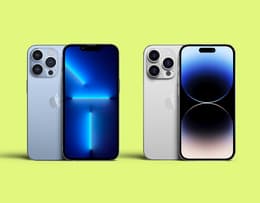
Side-by-side comparison of the iPhone 13 Pro Max and iPhone 14 Pro Max.
Camera
The iPhone 13 Pro Max continues to offer one of the best cameras in the game. Its triple camera setup comprises a 12MP main sensor with an f/1.5 aperture and sensor-shift stabilization, a 3x telephoto camera, and a 12MP ultra-wide sensor. However, the iPhone 14 Pro Max introduces two significant upgrades, starting with a 48MP main sensor that uses 4-in-1 pixel binning to create larger 2.4µm pixels (compared to 1.9µm on the iPhone 13 Pro Max). This added feature enables a true 2x telephoto zoom alongside the dedicated 3x telephoto lens. The ultra-wide camera is also better, featuring a larger 12MP sensor with 1.4µm pixels (compared to 1.0µm on the 13 Pro Max), which improves low-light performance. Apple's Photonic Engine further boosts low-light quality across all four cameras. The selfie camera has now gained autofocus and a wider f/1.9 aperture, improving focus in low light and taking sharper group shots from a distance.
Battery and charging
For the iPhone 13 series, Apple increased the battery sizes all around, with the iPhone 13 Pro Max taking a leap to a 4,352 mAh battery. Apple made minimal changes to the iPhone 14 Pro Max battery, using a slightly smaller cell with similar ratings while relying on the efficiency of the A16 Bionic chip to enhance battery life.
Regarding charging, there aren't any changes. Both phones continue to charge at 20W, and according to Apple, they should reach 50% capacity after 30 minutes of charging. Both phones also support MagSafe wireless charging.
iPhone 13 mini
iPhone 13 mini specs | |
|---|---|
Display | 5.4-inch Super Retina XDR display with True Tone |
Rear camera | Dual 12MP camera system |
Front camera | 12MP |
Storage | 128GB 256GB 512GB |
Security | Face ID |
Processor | A15 Bionic chip |
Bluetooth | 5.0 |
Connectors | Lightning connector |
Network | 5G/LTE Wi-Fi |
Battery | 2500 mAh battery |
Size | 131.5 x 64.2 x 7.65 mm |
Weight | 141 g |
The iPhone 13 mini takes what’s great about the larger iPhone 13 and fits it into a compact body that is not much larger than the iPhone 5S without skimming on features. Slightly bigger and heavier than the only other iPhone mini ever produced (iPhone 12 mini), the iPhone 13 mini is one of the most compact full-blooded smartphones you can buy. It is the smallest and most compact model of the iPhone 13 series. Still, it delivers flagship-level performance, making it an excellent choice for anyone looking for a compact yet powerful device. The 5.4-inch Super Retina XDR (OLED) display is superb, delivering bright and crisp visuals with 800 nits of brightness and 1,200 nits of peak brightness for HDR content. The slim, lightweight glass and aluminum body is comfortable to hold, and the one-hand-friendly phone fits easily in pockets. The iPhone 13 mini runs on the same A15 Bionic chip as its larger siblings, and storage options range from 128 GB to 512 GB. However, the smaller form factor means the iPhone 13 mini’s battery doesn’t last as long as its larger siblings. Still, with up to 17 hours of battery life, it performs respectably for a compact phone.

The iPhone 13 Mini suits compact phone lovers, while the iPhone 14 Plus caters to big-screen fans.
iPhone 14 Plus
iPhone 14 Plus specs | |
|---|---|
Display | 6.7-inch Super Retina OLED display with HDR and True Tone |
Rear camera | Dual 12MP camera system |
Front camera | 12MP |
Storage | 128GB 256GB 512GB |
Security | Face ID |
Processor | A15 Bionic chip |
Bluetooth | 5.3 |
Connectors | Lightning connector |
Network | 5G/LTE Wi-Fi |
Battery | 4350 mAh battery |
Size | 160.8 x 78.1 x 7.8 mm |
Weight | 203 g |
The iPhone 14 Plus shares almost everything with its smaller sibling, the iPhone 14. Unlike in the 13 series, where Apple went small with the iPhone 13 mini, the iPhone 14 series goes big with the 14 Plus, yet both are essentially the same entry-level model, just in different form factors. With the iPhone 14 Plus, you get the same processor, display technology, and camera array as the iPhone 14, with the only differences being the larger screen size and longer battery life resulting from the change in form factor. The 14 Plus is a supersized iPhone for anyone seeking a big-screen experience of the Pro Max iPhone without the extra cameras and features. The larger build makes it heavier than its non-Pro sibling, but the 6.7-inch OLED display is great for playing games, streaming videos, or maximizing text for better reading. Like the iPhone 13 mini, it is powered by the A15 Bionic chip, but with an extra GPU core, it offers a better gaming experience. Battery-wise, the 14 Plus performs excellently. It can provide up to 26 hours of video playback, which is expected for a phone of this size. While it isn’t the best iPhone in the lineup, it offers a nice middle ground between the standard iPhone 14 and the Pro models without the premium price tag.
Pros and cons
The choice between the iPhone 13 and iPhone 14 series depends on whether the latest upgrades justify the extra cost. While the iPhone 13 still delivers solid performance, great cameras, and reliable battery life at a lower price, the iPhone 14 introduces new features like a 48MP camera, advanced safety features, and better efficiency. To better help you decide between the two, here's a list of pros and cons for each series.
iPhone 13 Series | |
|---|---|
Pros ✅ | Cons ❌ |
More affordable | Lacks advanced safety features |
Solid performance with the A15 Bionic chip | No 48MP main camera |
Excellent battery life |
|
Solid camera system |
|
iPhone 14 Series | |
|---|---|
Pros ✅ | Cons ❌ |
Faster A16 Bionic chip | Standard models have minimal upgrades over the iPhone 13 |
48MP main camera (Pro models) | No significant battery life improvements |
Advanced safety features |
|
Dynamic island |
|
Always-On display (Pro models) |
|
How to buy a cheap iPhone 13 and iPhone 14
Buying refurbished is a great option if you want an affordable way to get an iPhone 13 or 14. While most retailers save their deals for sales events or new iPhone launches, Back Market offers unbeatable prices all year round. Our refurbished iPhones are available at lower prices and have a 1-year warranty for your peace of mind. You can get both iPhone 13 and iPhone 14 models in excellent condition at just a fraction of the price of buying new. But don't just take it from us; take it from this satisfied customer who gave us a 5/5 rating:
"First time purchased in backmarket. Got iPhone 14 plus, it looked like new, without the price of new device. The whole purchase experience was better than other ecommerce sites. I will use backmarket for my future electronic needs."
-Gopikrrishna B. - Purchased on March 14, 2025
Price and availability
The iPhone 13 and iPhone 14 series are still widely available, with varying price points depending on the model and storage capacity. While Apple no longer sells these devices directly on its website, you can find incredible deals on refurbished iPhone 14s and iPhone 13s at Back Market. Here are some of our top picks:
Model | Back Market Starting Price |
|---|---|
iPhone 13 | $212 |
iPhone 14 | $306.99 |
iPhone 13 mini | $240.99 |
iPhone 14 Plus | $328.86 |
iPhone 13 Pro | $337 |
iPhone 14 Pro | $426 |
iPhone 13 Pro Max | $399 |
iPhone 14 Pro Max | $489 |
Why buy refurbished
Refurbished devices are a smart, affordable, and eco-conscious choice compared to new devices. These devices offer the same quality and are available at only a fraction of the price. At Back Market, we deal in verified refurbished devices. These are pre-owned devices professionally restored to full functionality, making them a reliable and affordable alternative to new devices. Our thorough refurbishing process involves rigorous testing, repairs, and quality checks to ensure each iPhone meets the highest performance standards. By opting for a refurbished iPhone 13 or 14, you save money and help reduce electronic waste and carbon emissions. This eco-friendly approach extends the life of devices and supports a more sustainable tech industry. Here's what one Reddit user had to say about us:
"I bought my IPhone 13 2 years ago from Back Market and it still works like a dream! Came to the reddit to see how others felt about BackMarket because now I'm considering getting AirPod Pro's since they are $180 atm (really don't want to support by tech company so good to see back market gets good consistent reviews)"
Trade in your old tech for cash
Do you have old electronics cluttering your drawers and home? Back Market's Trade-in program lets you sell your devices quickly while earning cash or credit toward a refurbished upgrade. The process is simple: get an instant quote, ship your device for free, and receive payment once verified. This earns you extra cash and promotes sustainability by giving old tech a second life.
Model | Trade-in value |
|---|---|
$124 | |
$159 | |
$185 | |
iPhone 12 | $148 |
iPhone 12 mini | $122 |
$200 | |
$270 |
Final thoughts: The iPhone 14 adds a little, and the iPhone 13 still holds its own
The choice between the iPhone 14 and iPhone 13 series ultimately depends on your priorities and circumstances. While the iPhone 14 series is newer and offers marginal improvements, the iPhone 13 series remains an excellent value buy, especially at an all-time low price. For those already using a phone from the iPhone 13 series, there's little to no reason to upgrade to the iPhone 14 series. Both series offer almost identical performances and share a lot of features. The iPhone 14 series stands out with its enhanced camera and advanced safety features, such as Crash Detection and SOS Emergency satellite connectivity.
That said, if you're upgrading from an older iPhone or are joining the iPhone ecosystem for the first time, the iPhone 14 series is a wise investment. Though pricier than the iPhone 13 series, the iPhone 14 series offers a more advanced camera system, great battery life, and extended software support. Nonetheless, you cannot go wrong with either the iPhone 13 or 14 series.

Written by Miguel G., Sr. Tech Copywriter (US)
Miguel is always looking for new ways to provide unique perspective on popular tech and has taken his writing to the refurbished industry to promote sustainability. Outside of creating content, you might find him travelling the globe, coaching a fitness class, or cheering on his favorite sports teams (Go Dolphins!)

